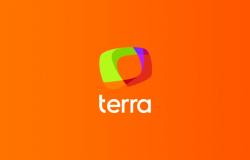BRASILIA – The regulation of tax reform presented by the Lula government to Congress will lead professionals who work as Legal Entities (PJ) to do the math to find out whether or not it is worth migrating to the new taxation model, which establishes the Value Added Tax (VAT) in the country.
Those opting for Simple national – tax regime for micro and small companies – enjoy more beneficial rules today, and which will not be changed by the current reform. But the new system proposed by the government will also give tax discount for a list of independent professionals. It will still be possible to generate credit throughout the chain for expenses with inputs and investments, for example.
continues after advertising
Generally speaking, independent professionals will tend to remain in Simples, according to experts consulted by Estadãoeven with the 30% discount on the standard rate – valid for 17 categories, according to the government bill sent to Congress.
For health and education professionals, who receive a greater discount compared to the standard rate of 60%, the account will become more “disputed” between the two regimes – and the analysis will have to be thorough. For this group, what could be decisive in deciding which model to follow will be each professional’s input costs.
continues after advertising
For a dentist, for example, who has higher expenses with materials and equipment, the VAT model for the new reform may be more advantageous. A psychologist’s or nutritionist’s office, which has few expenses to deduct, tends to be more beneficial to stay with Simples.
The new VAT’s principle is that it is not fully cumulative, in order to avoid the so-called cascade taxation. Each stage of the production chain will only effectively pay tax on the value it added to the product. Thus, if a company purchases an input, for example, it obtains credit with the tax paid – since, in the previous stage of the chain, this item has already been taxed.
continues after advertising
Simples Nacional has a revenue ceiling of R$4.8 million; but, for state (ICMS) and municipal (ISS) taxes, the ceiling is lower, at R$3.6 million. In each revenue range, there is a rate defined by the government, which varies from 6% to 33%, but with a range of deductions that ends up practically halving the companies’ effective burden.
Furthermore, in this percentage, in addition to the taxes covered by the current reform, focused on consumption (PIS, Cofins, ICMS and ISS), expenses with Corporate Income Tax (IRPJ) and Employer Social Security Contribution (CPP) are included.
continues after advertising
For a service provider with revenues of R$3 million per year, for example, the effective Simples rate is 16.8%. Of this percentage, 8.3% refers to payments of ISS, PIS and Cofins (there is no ICMS, as it is a service), which will need to be compared with the rates of IBS and CBS (the two new taxes created by the reform). Another 7.3% are from CPP and another 1.3% from IRPJ and CSLL.
Anyone leaving Simples, therefore, will have to pay separately 8.6% in CPP, IRPJ and CSLL taxes. Therefore, the discount on the VAT rate plus the credits generated need to be high to offset this expense.
In the case of self-employed professionals, the 30% discount on the standard VAT rate, estimated by the economic team at 26.5%, will give 18.55%. As they will also have to pay an additional 8.6% in other taxes (CPP, IRPJ and CSLL), the total rate will jump to 27.15% – well above the 16.8% effective rate of Simples, considering this company with revenue of R$3 million.
continues after advertising
In this case, the credits generated by the purchase of inputs would have to be very high to reduce the effective rate. Therefore, the tendency will be to remain in Simples.
For healthcare professionals, the 60% discount reduces the tax to an effective VAT rate of 10.6%. With the additional payment of another 8.6% (CPP, IRPJ and CSLL), it would rise to 19.2%, already close to the 16.8% of Simples, in this revenue range.
In this case, what would be decisive would be the input rebates. A dentist could benefit more, while professions such as psychologists and nutritionists, which have less equipment and input costs, would tend to remain in Simples as it is more advantageous.
continues after advertising
Throughout the transition, however, these sectors may need the help of accountants and specialized people to do the math and decide the best path to follow.






